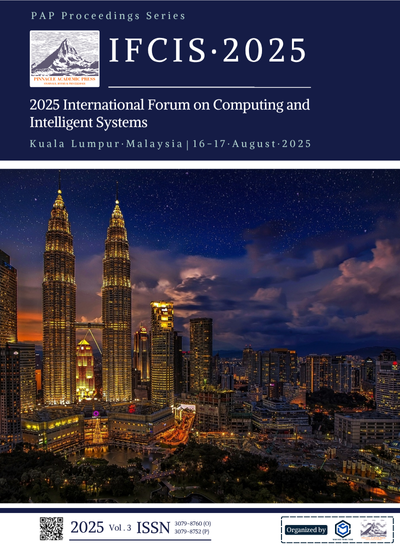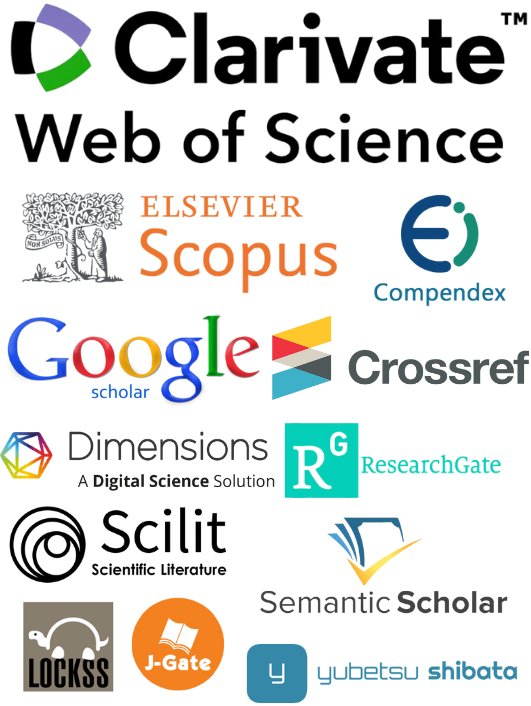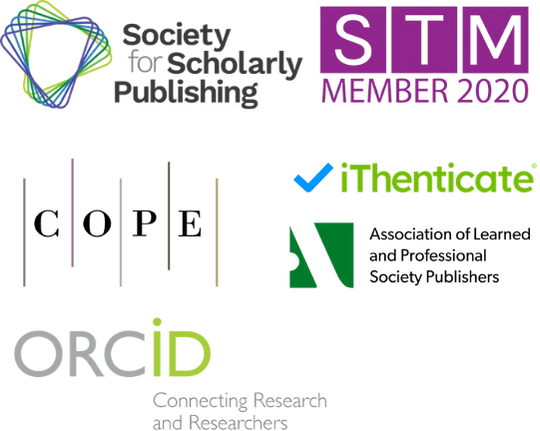MultiStream-FinBERT: A Hybrid Deep Learning Framework for Corporate Financial Distress Prediction Integrating Accounting Metrics, Market Signals, and Textual Disclosures
Keywords:
financial distress prediction, deep learning, multimodal data fusion, natural language processingAbstract
Financial distress prediction represents a critical challenge in corporate finance, with significant implications for investors, creditors, and regulatory bodies. This paper introduces MultiStream-FinBERT, a novel hybrid deep learning framework that integrates accounting metrics, market signals, and textual disclosures to enhance the accuracy and timeliness of financial distress prediction. The proposed architecture employs specialized processing modules for each data stream, with a sophisticated cross-attention mechanism facilitating effective information fusion across modalities. We construct and validate our model using a comprehensive dataset of 3,582 publicly traded companies spanning 2010-2023, with 426 experiencing financial distress. Extensive experiments demonstrate that MultiStream-FinBERT achieves 94.73% accuracy and 96.84% AUROC, substantially outperforming existing approaches including LSTM-Attention (91.86%, 94.18%) and traditional statistical models (79.24%, 81.56%). Ablation studies confirm the critical contribution of each data stream, with the accounting stream providing the strongest individual signal. The model maintains strong predictive performance up to 9 months before distress events, offering stakeholders extended warning periods for intervention. Feature importance analysis reveals distinct patterns across industry sectors and prediction horizons, with a shift from immediate liquidity indicators at shorter horizons toward structural factors at longer timeframes. The proposed framework offers significant advancements in financial risk assessment through its multimodal approach and enhanced interpretability.
References
1. W. Yang, "A Novel Intelligent Prediction Model for Corporate Distress Using Machine Learning and Support Vector Machine," in 2023 Int. Conf. Networking, Informatics and Computing (ICNETIC), Palermo, Italy, 2023, pp. 162-166, doi: 10.1109/ICNETIC59568.2023.00040.
2. S. Ramzan, "Comparison of Financial Distress Prediction Models Using Financial Variables," in 2023 Int. Conf. Electrical, Com-puter and Energy Technologies (ICECET), Cape Town, South Africa, 2023, pp. 1-7, doi: 10.1109/ICECET58911.2023.10389294.
3. Y. K. Jain, P. Verma, A. Johrawanshi, P. Beriwala, P. K. Mannepalli and A. Maheshwari, "Performance Evaluation of Machine Learning Models for Prediction and Analysis of Financial Distress," in 2024 Int. Conf. Communication, Control, and Intelligent Systems (CCIS), Mathura, India, 2024, pp. 1-6, doi: 10.1109/CCIS63231.2024.10931841.
4. B. Nath and H. Kaur, "Predicting Financial Distress in Enterprises by Applying Multilevel Ensemble Technique," in 2019 IEEE 5th Int. Conf. Convergence in Technology (I2CT), Bombay, India, 2019, pp. 1-4, doi: 10.1109/I2CT45611.2019.9033656.
5. X. Tang, "Simulation of Enterprise Financial Management Early Warning Model Based on Neural Network Algorithm," in 2024 IEEE Int. Conf. Information Technology, Electronics and Intelligent Communication Systems (ICITEICS), Bangalore, India, 2024, pp. 1-5, doi: 10.1109/ICITEICS61368.2024.10625488.
6. Z. Ji, C. Hu, and G. Wei, "Reinforcement Learning for Efficient and Low-Latency Video Content Delivery: Bridging Edge Computing and Adaptive Optimization," J. Adv. Comput. Syst., vol. 4, no. 12, pp. 58-67, 2024, doi: 10.69987/JACS.2024.41205.
7. K. Zhang and P. Li, "Federated Learning Optimizing Multi-Scenario Ad Targeting and Investment Returns in Digital Adver-tising," J. Adv. Comput. Syst., vol. 4, no. 8, pp. 36-43, 2024, doi: 10.69987/JACS.2024.40806.
8. E. Feng, H. Lian, and C. Cheng, "CloudTrustLens: An Explainable AI Framework for Transparent Service Evaluation and Selection in Multi-Provider Cloud Markets," J. Comput. Innov. Appl., vol. 2, no. 2, pp. 21–32, Jul. 2024, doi: 10.63575/CIA.2024.20203.
9. B. Dong and T. K. Trinh, "Real-time Early Warning of Trading Behavior Anomalies in Financial Markets: An AI-driven Ap-proach," J. Econ. Theory Bus. Manag., vol. 2, no. 2, pp. 14–23, 2025, doi: 10.70393/6a6574626d.323838.
10. G. Rao, C. Ju, and Z. Feng, "AI-Driven Identification of Critical Dependencies in US-China Technology Supply Chains: Impli-cations for Economic Security Policy," J. Adv. Comput. Syst., vol. 4, no. 12, pp. 43-57, 2024, doi: 10.69987/JACS.2024.41204.
11. X. Jiang, W. Liu, and B. Dong, "FedRisk A Federated Learning Framework for Multi-institutional Financial Risk Assessment on Cloud Platforms," J. Adv. Comput. Syst., vol. 4, no. 11, pp. 56-72, 2024, doi: 10.69987/JACS.2024.41105.
12. J. Fan, H. Lian, and W. Liu, "Privacy-Preserving AI Analytics in Cloud Computing: A Federated Learning Approach for Cross-Organizational Data Collaboration," Spectrum Res., vol. 4, no. 2, 2024.
13. X. Jia, C. Hu, and G. Jia, "Cross-modal Contrastive Learning for Robust Visual Representation in Dynamic Environmental Conditions," Acad. J. Nat. Sci., vol. 2, no. 2, pp. 23–34, 2025, doi: 10.70393/616a6e73.323833.
14. Y. Xi and Y. Zhang, "Measuring Time and Quality Efficiency in Human-AI Collaborative Legal Contract Review: A Mul-ti-Industry Comparative Analysis," Ann. Appl. Sci., vol. 5, no. 1, 2024.
15. Q. Zhao, Y. Chen, and J. Liang, "Attitudes and Usage Patterns of Educators Towards Large Language Models: Implications for Professional Development and Classroom Innovation," Acad. Nexus J., vol. 3, no. 2, 2024.
16. J. Zhang, X. Xiao, W. Ren, and Y. Zhang, "Privacy-Preserving Feature Extraction for Medical Images Based on Fully Homo-morphic Encryption," J. Adv. Comput. Syst., vol. 4, no. 2, pp. 15-28, 2024.
17. H. Zhang, E. Feng, and H. Lian, "A Privacy-Preserving Federated Learning Framework for Healthcare Big Data Analytics in Multi-Cloud Environments," Spectrum Res., vol. 4, no. 1, 2024.
18. X. Xiao, H. Chen, Y. Zhang, W. Ren, J. Xu, and J. Zhang, "Anomalous Payment Behavior Detection and Risk Prediction for SMEs Based on LSTM-Attention Mechanism," Acad. J. Sociol. Manag., vol. 3, no. 2, pp. 43–51, 2025, doi: 10.70393/616a736d.323733.
19. X. Xiao, Y. Zhang, H. Chen, W. Ren, J. Zhang, and J. Xu, "A Differential Privacy-Based Mechanism for Preventing Data Leakage in Large Language Model Training," Acad. J. Sociol. Manag., vol. 3, no. 2, pp. 33–42, 2025, doi: 10.70393/616a736d.323732.
20. C. Chen, Z. Zhang, and H. Lian, "A Low-Complexity Joint Angle Estimation Algorithm for Weather Radar Echo Signals Based on Modified ESPRIT," J. Ind. Eng. Appl. Sci., vol. 3, no. 2, pp. 33–43, 2025, doi: 10.70393/6a69656173.323832.
21. K. Xu and B. Purkayastha, "Integrating Artificial Intelligence with KMV Models for Comprehensive Credit Risk Assessment," Acad. J. Sociol. Manag., vol. 2, no. 6, pp. 19–24, 2024.
22. K. Xu and B. Purkayastha, "Enhancing Stock Price Prediction through Attention-BiLSTM and Investor Sentiment Analysis," Acad. J. Sociol. Manag., vol. 2, no. 6, pp. 14–18, 2024.
23. M. Shu, J. Liang, and C. Zhu, "Automated Risk Factor Extraction from Unstructured Loan Documents: An NLP Approach to Credit Default Prediction," Artif. Intell. Mach. Learn. Rev., vol. 5, no. 2, pp. 10-24, 2024.
24. M. Shu, Z. Wang, and J. Liang, "Early Warning Indicators for Financial Market Anomalies: A Multi-Signal Integration Ap-proach," J. Adv. Comput. Syst., vol. 4, no. 9, pp. 68-84, 2024, doi: 10.69987/JACS.2024.40907.
25. Y. Liu, W. Bi, and J. Fan, "Semantic Network Analysis of Financial Regulatory Documents: Extracting Early Risk Warning Signals," Acad. J. Sociol. Manag., vol. 3, no. 2, pp. 22–32, 2025, doi: 10.70393/616a736d.323731.
26. Y. Zhang, J. Fan, and B. Dong, "Deep Learning-Based Analysis of Social Media Sentiment Impact on Cryptocurrency Market Microstructure," Acad. J. Sociol. Manag., vol. 3, no. 2, pp. 13–21, 2025, doi: 10.70393/616a736d.323730.
27. Z. Zhou, Y. Xi, S. Xing, and Y. Chen, "Cultural Bias Mitigation in Vision-Language Models for Digital Heritage Documentation: A Comparative Analysis of Debiasing Techniques," Artif. Intell. Mach. Learn. Rev., vol. 5, no. 3, pp. 28-40, 2024, doi: 10.69987/AIMLR.2024.50303.
28. W. Ren, X. Xiao, J. Xu, H. Chen, Y. Zhang, and J. Zhang, "Trojan Virus Detection and Classification Based on Graph Convolu-tional Neural Network Algorithm," J. Ind. Eng. Appl. Sci., vol. 3, no. 2, pp. 1–5, 2025, doi: 10.70393/6a69656173.323735.
29. C. Zhang, "An overview of cough sounds analysis," in Proc. 2017 5th Int. Conf. Frontiers Manuf. Sci. Meas. Technol. (FMSMT), Apr. 2017, pp. 703-709, doi: 10.2991/fmsmt-17.2017.138.
30. J. Wang, L. Guo, and K. Qian, "LSTM-Based Heart Rate Dynamics Prediction During Aerobic Exercise for Elderly Adults," Preprints, 2025, doi: 10.20944/preprints202504.1692.v1.
31. D. Ma, M. Shu, and H. Zhang, "Feature Selection Optimization for Employee Retention Prediction: A Machine Learning Ap-proach for Human Resource Management," Appl. Comput. Eng., vol. 141, pp. 120–130, 2025, doi: 10.54254/2755-2721/2025.21789.
32. M. Li, D. Ma, and Y. Zhang, "Improving Database Anomaly Detection Efficiency Through Sample Difficulty Estimation," Pre-prints, 2025, doi: 10.20944/preprints202504.1527.v1.
33. K. Yu, Y. Chen, T. K. Trinh, and W. Bi, "Real-Time Detection of Anomalous Trading Patterns in Financial Markets Using Gen-erative Adversarial Networks," Appl. Comput. Eng., vol. 141, pp. 234–243, 2025, doi: 10.54254/2755-2721/2025.22016.
34. W. Wan, L. Guo, K. Qian, and L. Yan, "Privacy-preserving industrial IoT data analysis using federated learning in multi-cloud environments," Appl. Comput. Eng., vol. 141, pp. 7-16, 2025, doi: 10.54254/2755-2721/2025.21395.
35. Z. Wu, Z. Zhang, Q. Zhao, and L. Yan, "Privacy-Preserving Financial Transaction Pattern Recognition: A Differential Privacy Approach," Preprints, 2025, doi: 10.20944/preprints202504.1583.v1.
36. G. Rao, S. Zheng, and L. Guo, "Dynamic Reinforcement Learning for Suspicious Fund Flow Detection: A Multi-Layer Trans-action Network Approach with Adaptive Strategy Optimization," Appl. Comput. Eng., vol. 119, pp. 1–11, 2025, doi: 10.54254/2755-2721/2025.tj21580.
37. W. Ian, L. Yan, J. Weng, and D. Ma, "Enhanced TransFormer-Based Algorithm for Key-Frame Action Recognition in Basketball Shooting," Preprints, 2025, doi: 10.20944/preprints202503.1364.v1.
38. Y. Wang, W. Wan, H. Zhang, C. Chen, and G. Jia, "Pedestrian Trajectory Intention Prediction in Autonomous Driving Scenarios Based on Spatio-temporal Attention Mechanism," in Proc. 2024 4th Int. Conf. Electron. Inf. Eng. Comput. Commun. (EIECC), Wuhan, China, 2024, pp. 1519-1522, doi: 10.1109/EIECC64539.2024.10929534.
39. S. Michael et al., "Automatic Short Answer Grading in College Mathematics Using In-Context Meta-learning: An Evaluation of the Transferability of Findings," in A. M. Olney, I. A. Chounta, Z. Liu, O. C. Santos, and I. I. Bittencourt, Eds., Artificial Intelli-gence in Education: Posters and Late Breaking Results, Workshops and Tutorials, Industry and Innovation Tracks, Practitioners, Doctoral Consortium and Blue Sky, Commun. Comput. Inf. Sci., vol. 2150. Cham: Springer, 2024, doi: 10.1007/978-3-031-64315-6_38.
40. H. McNichols, M. Zhang, and A. Lan, "Algebra Error Classification with Large Language Models," in N. Wang, G. Re-bolledo-Mendez, N. Matsuda, O. C. Santos, and V. Dimitrova, Eds., Artificial Intelligence in Education: AIED 2023, Lect. Notes Comput. Sci., vol. 13916. Cham: Springer, 2023, doi: 10.1007/978-3-031-36272-9_30.
41. M. Zhang, N. Heffernan, and A. Lan, "Modeling and Analyzing Scorer Preferences in Short-Answer Math Questions," arXiv preprint arXiv:2306.00791, 2023.
42. M. Zhang, Z. Wang, Z. Yang, W. Feng, and A. Lan, "Interpretable math word problem solution generation via step-by-step planning," arXiv preprint arXiv:2306.00784, 2023.
43. M. Zhang, S. Baral, N. Heffernan, and A. Lan, "Automatic short math answer grading via in-context meta-learning," arXiv preprint arXiv:2205.15219, 2022.
44. Z. Wang, M. Zhang, R. G. Baraniuk, and A. S. Lan, "Scientific Formula Retrieval via Tree Embeddings," in Proc. 2021 IEEE Int. Conf. Big Data (Big Data), Orlando, FL, USA, 2021, pp. 1493-1503, doi: 10.1109/BigData52589.2021.9671942.
45. M. Zhang, Z. Wang, R. Baraniuk, and A. Lan, "Math operation embeddings for open-ended solution analysis and feedback," arXiv preprint arXiv:2104.12047, 2021.
46. S. Jordan, Y. Chandak, D. Cohen, M. Zhang, and P. Thomas, "Evaluating the performance of reinforcement learning algo-rithms," in Proc. Int. Conf. Mach. Learn., Nov. 2020, pp. 4962-4973. PMLR. doi: 10.48550/arXiv.2006.16958.
47. D. Qi, J. Arfin, M. Zhang, T. Mathew, R. Pless, and B. Juba, "Anomaly Explanation Using Metadata," in 2018 IEEE Winter Conf. Appl. Comput. Vis. (WACV), Lake Tahoe, NV, USA, 2018, pp. 1916-1924, doi: 10.1109/WACV.2018.00212.
48. M. Zhang, T. Mathew, and B. Juba, "An Improved Algorithm for Learning to Perform Exception-Tolerant Abduction," in Proc. AAAI Conf. Artif. Intell., vol. 31, no. 1, 2017, doi: 10.1609/aaai.v31i1.10700.
Downloads
Published
Issue
Section
License
Copyright (c) 2025 Liya Ge, Guoli Rao (Author)

This work is licensed under a Creative Commons Attribution 4.0 International License.



